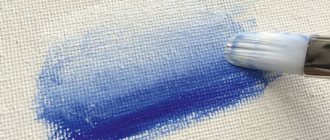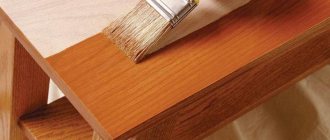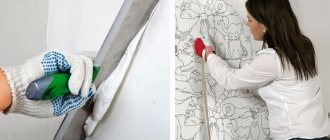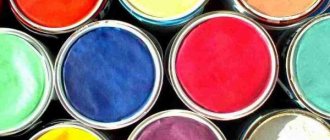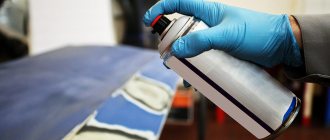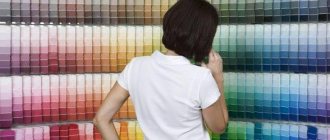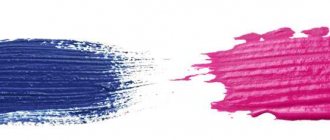If you've previously only drawn in a sketchbook or on paper, the transition to canvas can seem daunting. In this article you will find all the information you need about painting on canvas. Starting with equipment and ending with preparing the surface before painting.
Canvas is an artist's best friend and offers many advantages over paper. For example, canvas is much more durable and can guarantee the safety of your work for many years. At least for this reason, it’s worth trying to learn how to work with canvas.
What types of canvases are there?
For centuries, oil paintings have been done on specially prepared wooden panels. This material provided an excellent rigid surface, but time and environmental influences could cause the pattern to crack and warp. They were also difficult to transport. Soon, lightweight canvas on a stretcher became the number one choice for artists.
Canvases are available in different finishes at different prices (Photo courtesy of Arteza).
Walk into any art store and you will find the most common canvases made from cotton fabric and frame. Their cost depends on the material used and the coating of the canvas. Basically, the cheapest canvases are made of cotton and coated with polyacrylics. And linen canvas coated with oil primer will cost an order of magnitude more.
Lifehacks
I will share some tips and subtleties of working with this material:
- If the painted work is not satisfactory, and the layer of oil is still fresh, it can be easily removed with a regular damp cloth.
- With the help of a palette knife, any work, even one that has dried for a long time, can also be scraped off , thereby freeing the canvas for a new creation.
- A beginning artist can use almost any vegetable oil . The drying time of the work largely depends on the humidity in the room. In a well-ventilated room in summer or in a heated room in winter, work written even with sunflower oil will dry quickly enough.
- You can write on almost anything . Of course, the service life of the object in this way will not be decades, but for the first time any inspiring surface will do. For example, a kitchen cabinet or a board from a barn.
- Brushes . Again, everything will be used: cosmetics, construction, culinary. You should choose the one with whose help you get the desired stroke.
- Today they even produce paper on which you can write in oil . Many artists do not disdain this material to set a sufficient number of illustrations (for example, for books).
- A novice artist just needs to purchase a set of five colors from any manufacturer (red, yellow, blue, white and black). By mixing them, you can achieve the required shades and gain important experience.
- Acrylic paints are sold almost everywhere . They are much more popular than butter and cheaper. In addition, acrylic dries much faster. So the first layers of work can be safely done with this material. It goes well with oil in work.
- If you don’t have a worthy plot in your head, you should try by trying to write a copy of a famous painting . Such copies, if they are well written, by the way, sell well.
- Drawing from life is a real pleasure . You only have to try it once. It's surprising that some aspiring artists deprive themselves of such a pleasant and useful activity.
Editorial opinion
Elena Kalita
Magazine editor
Anyone can truly create masterpieces. Every hand-made masterpiece contains not only skill, but also soul. Delve into every detail, every shade of paint, every movement of your hand, select only the best available, feel that creating your own painting is not only a process, but also a kind of meditation into which you immerse yourself headlong, and then... A truly beautiful piece of work will come out of your hands.
Porous and non-porous primers
Whatever canvas you choose, it needs to be coated with a primer. Primed fabrics can be divided into two types, porous and non-porous.
An acrylic primer will make the canvas porous, while an oil primer will do the opposite. The basic principle is that a porous primer allows the paint to dry faster as the water in the paint is absorbed into the canvas. In this case, with a non-porous primer, the paint takes a long time to dry naturally due to the evaporation of water.
Non-porous primers allow you to work on a painting for longer (Photo courtesy of Michael Harding)
The main advantage of using a non-porous primer is that the paint will remain wet, giving you more time to finish the painting. Moreover, oil paint will retain more shine and be more durable. Porous primers can cause paint to look dead and lack luster. This happens because it dries too quickly.
Gouache
Drawing with this material seems velvety to the touch and appearance, but it can get your hands dirty and smear, but not very much. More often, due to inexperience, artists apply too thick a layer of paint, which is why this area may crumble after drying.
These paints should also be kept away from the sun, and most importantly, the lid should be closed well, otherwise even water will not be able to revive them if you forget them open for a long time.
For those who want to try them as a material, it’s worth learning a couple of tips to get started.
- Gouache loves water, but don't overdo it. Too much water can cause the final work to be sticky and not dry.
- If something doesn't work out for you, don't be discouraged. This paint easily covers the previous layer, which can be used to correct mistakes.
- Any paper can be used. This paint is not as water-based as watercolor, but if you want to preserve your work for a long time, it is better to use a dense material that does not deteriorate longer.
An interesting fact is that Rubens and Picasso also used gouache. Nowadays, many people believe that these are exclusively children's paints, but this is not so. From time immemorial, gouache was used by professionals in their field, even if we remember them as material from childhood.
Canvas drawing for beginners
So, you have everything prepared, and the canvas is primed and ready to go. Time to start drawing! The next steps mainly depend on what kind of paint you are using. We've put together our best tips to help you continue your canvas journey.
Oil painting
Working with oil may seem difficult. And mastering oil painting requires knowledge of techniques that you most likely do not yet possess. Learn these 28 oil painting tips to gain the knowledge you need to get started with paint. If you want to learn the Bob Ross technique, which is ideal for beginners, read this article. It describes in detail all the necessary materials, and there is a video tutorial.
Acrylic painting
Acrylic paints dry quickly and can be used straight from the tube or with the addition of water. And if you dilute them, they will look like watercolors. After reading this article, you will be able to easily work with this vibrant and versatile environment.
General drawing tips
Study the article Mistakes of Beginning Artists: How to Draw Believably. It will help you understand the basic principles of drawing, and you won't have to relearn how to draw correctly.
All the subtleties of the paint-by-numbers process
When painting paintings on canvas or cardboard by numbers, there are several points that a novice artist should consider.
Coloring books are chosen according to the plot. On the domestic market there are samples with copies of famous masters:
- Still lifes.
- Landscapes.
- Portraits.
Beginners begin work with simple compositions and clear plots.
Acrylic is a synthetic substance that resembles watercolor painting techniques. This coloring composition is water-based and does not require special thinners. The paint applies to the product easily and beautifully, dries quickly, so in hot weather a spray bottle of water would be handy to wet the palette. Cups of water are placed on the table to rinse the brushes and napkins are prepared to blot them.
Acrylic paints are light resistant, non-toxic, and completely ready for use. They should be mixed before use. If the coloring matter is too thick, you can add 1 drop of water, preferably distilled. It is additionally purchased in pharmacies or auto shops. To dilute, some artists use special solvents for acrylic.
In order not to confuse the color schemes when drawing, you should check the correspondence of the numbers on the template with the numbers on the tubes and jars. The markings must match.
In the process of work, first sketch all the details in one color, then move on to another, otherwise the paint will dry out and you will have to constantly dilute it.
When applying a light or shiny tone, the numbers and outlines on the base of the product may show through. Several layers of paint are applied to such segments, and a palette knife can be used. Sometimes, before applying a light layer, the numbers are painted over with white paint, then the main color is applied.
Paint by numbers kit.
Number coloring is based on 4 principles:
- From light to dark. First they paint in yellow, pink, and white tones. They can be erased or painted over with a darker color.
- From more to less. At the initial stage, large details are sketched, then they move on to small ones, this way you can avoid blots and blunders during the work, compare the sketched fragments with the finished example, add strokes and highlights. To draw very small fragments, use a toothpick.
- From the center - to the edges. The main image in art is always in the middle, so if you start work from the central part, there is less chance of smearing the picture with your sleeve or elbow.
- Top down. If you work in this direction, the product will turn out cleaner and tidier.
Mixing paints
The choice of color is of great importance. In painting kits, the paints have the shade indicated on the template. If during creativity the desired color runs out, it is mixed with others. Light colors run out faster. In any image there are more light spots than dark ones, otherwise the picture becomes gloomy. To obtain subtle and fresh shades, it is recommended to dilute white with a color with a tone closest to the required shade.
Difficulty level
The difficulty level is indicated on the packaging with star symbols. The more stars, the more complex the pattern. The complexity of the image is determined by the presence of a large number of small fragments. Careful and painstaking painting will require a lot of time and professionalism. It is better for pensioners and people with low vision to buy sets with 2 or 3 stars, for children - with 1 star.
Acrylic paints
Acrylic for painting began to be used recently, but has already gained popularity.
The key to success is simple: acrylic paints for painting are suitable for literally painting on everything. Any non-greasy surface will do, be it paper, wood, ceramics, fabric base (canvas), glass or even metal. Acrylic does not dry for long, and the colors invariably delight with brightness and rich shades. Once dry, they do not fade or fade over time, and cannot be washed off with water either. But a fresh acrylic drawing is removed without a trace and without problems.
Remember: Acrylic dries in literally an hour, so immediately after use, close the tubes and rinse the brushes with warm water. As the work dries, it darkens.
The painting can be easily diluted (and even washed off) with water, allowing you to achieve almost any texture - from translucent watercolor to thick strokes of oil paints.
Instead of water, it is better to use a special thinner. You can buy acrylic paints in different containers - tubes or jars. They are more in demand in tubes - there the consistency is close to oil.
They produce thick, liquid, glossy, matte, shiny, pearlescent versions of acrylic.
About drawing techniques
Preparing for creativity does not take much time, especially since in modern art stores you can purchase everything you need for work. Already stretched and primed, canvases can be found in any size - from the smallest to the largest.
A painting done with oil paints looks very impressive. The strokes applied by the artist look as if they are separate from each other. Many people think that oil painting is a fairly simple activity, but this is absolutely not the case. Let's try to figure out how to learn to paint with oil paints.
Each master has his own drawing technique, which has its own characteristics. The standard ones are:
- multi-layer application;
- alla prima - one layer.
Performing multi-layer application is a very complex technique in which you need to be as careful as possible, knowing all the properties and characteristics of oil paints. It is necessary to work in the same style and not dilute the paint in order to finish the job faster. A diluted composition may appear more matte and dull on the canvas than other parts. With this technique, the whole job will take more than one or two tubes of paint.
When applying one layer, be aware that the paint may shrink and cracks will appear in the painting. In this case, artists let the first layer dry completely and paint the second. Many craftsmen use this technique more often, since the material consumption is lower.
Secret 7. Nature + acrylic = harmony
What paintings are best to paint with acrylic paints? Landscapes, flowers, still lifes and, of course, impressionistic sketches are excellent. If certain rules are followed, paintings painted with acrylic are not inferior in beauty to those made in oil.
Arm yourself with these little secrets, and you will end up with a wonderful painting that you could only dream of!
acrylic paints
Gouache paints
Many people treat gouache condescendingly. It is considered suitable for posters and children's creativity.
However, before classifying gouache drawings as “frivolous painting”, it is worth remembering that such masters as Picasso, Matis, Miro, Rubens, Kustodiev, Benois, Serov and many other artists painted with it. And there are several reasons for this.
Gouache is universal; it can be used to paint not only on paper, but also on wood, fabric, and glass. No thinners or drying accelerators are required. It dries quickly. And if you suddenly want to add or correct nuances in a drawing, you can do this, even after some time. That is why painting with gouache is a favorite pastime of children, novice artists, and even professionals.
The main feature of gouache paint is its opacity, that is, it is opaque. This feature is valuable because it allows you to cover dark areas with light ones, and vice versa. This type differs from oil paints, tempera, and watercolors. And remember: if you put it in several layers, do not overdo it: too many layers may cause the result to crack.
Gouache paintings turn out matte, dense, slightly velvety - it’s all due to the whitewash. Together with the water-based adhesive base and pigments, they are included in the ingredients.
When choosing from types of gouache - poster, artistic, acrylic, for children's creativity, keep in mind that: the best gouache for children and beginners is artistic: it has excellent hiding power and lays on the surface without any problems.
Remember: As the gouache dries, it becomes lighter because it contains white. Therefore, use colors that are more saturated than the intended result.
You can buy gouache in tubes of various capacities, or in ditches. In addition, it is also packaged in jars (metal, glass, plastic).
Pastel
When you see pastels, you don’t recognize them as paints at all, because they look like children’s wax crayons. To draw with pastels, you do not need water or brushes (only in rare exceptions), but only the crayons themselves and paper or canvas. Despite this, pastel is still "paint". All pastels are divided into four types: dry, oil, wax and watercolor.
Wax crayons, which children often use to draw, are a type of pastel, but few people know about it, and the artists themselves do not like to use the wax variety, unless they are book illustrators.
Dry, in turn, is also divided according to softness. Ultra-soft contains almost no binding component, thanks to which hardening is achieved.
That's why they sell it in jars and paint it with sponges. Dry is the most common among pastels. It applies softly and easily to paper, blends well and mixes shades perfectly. Dry pastels are also often combined with other paints, such as watercolors or acrylics, and most often all types of softness are used at once.
The only negative is the fragility of the finished work; it can easily be damaged by careless movement, so it is either sprayed with a special solution or placed in a frame under anti-reflective glass. Such glass is often used in art galleries, not only for paintings made from this paint.
Oil pastels are quite harmful material. It does not allow shading, and its colors hardly mix or are extremely reluctant to do so, but in itself it does not require additional fixation. The material itself seems a little greasy to the touch.
Watercolor pastels can be blurred with water, which adds the effect of watercolor painting and airy lightness to the work.
